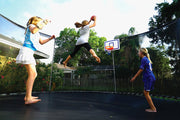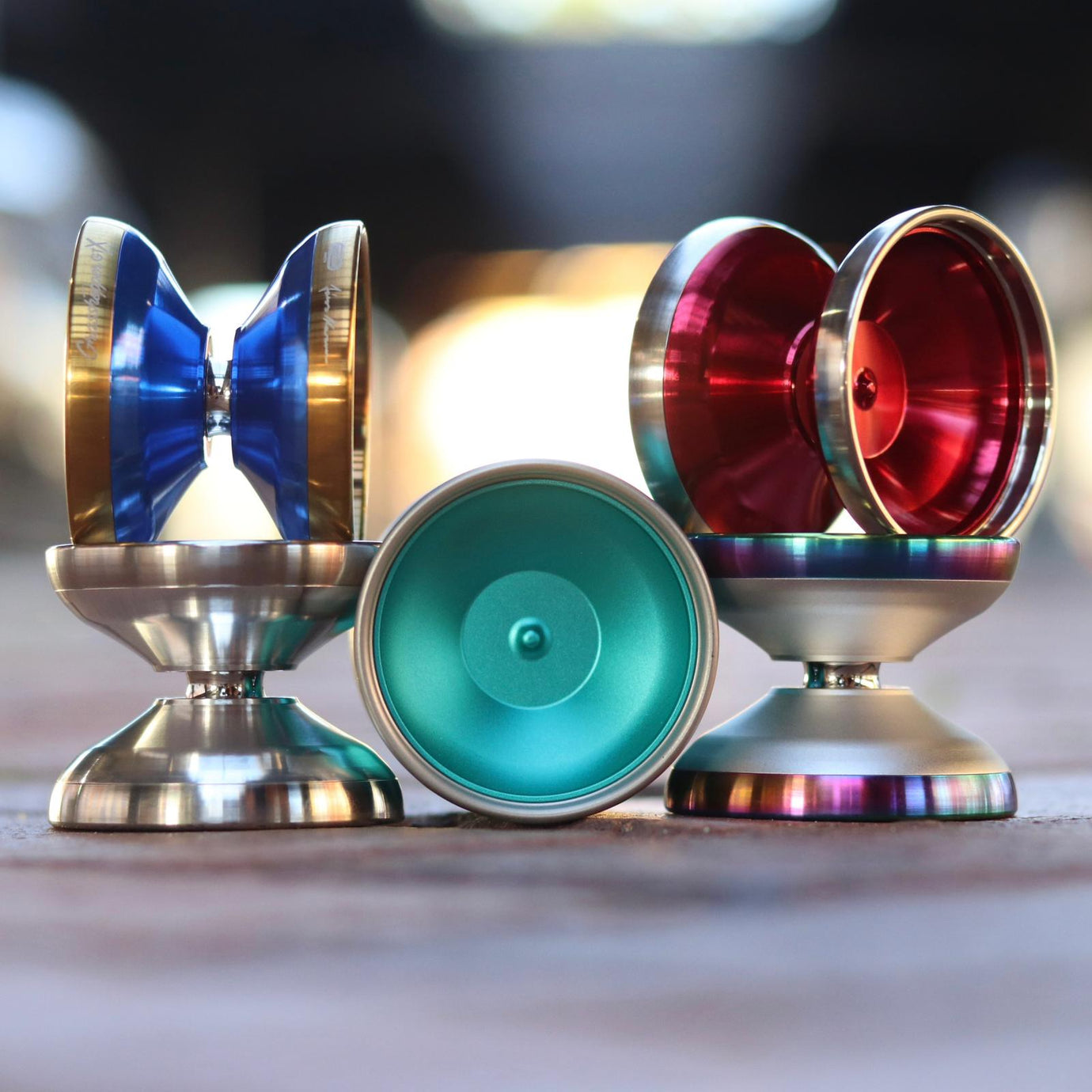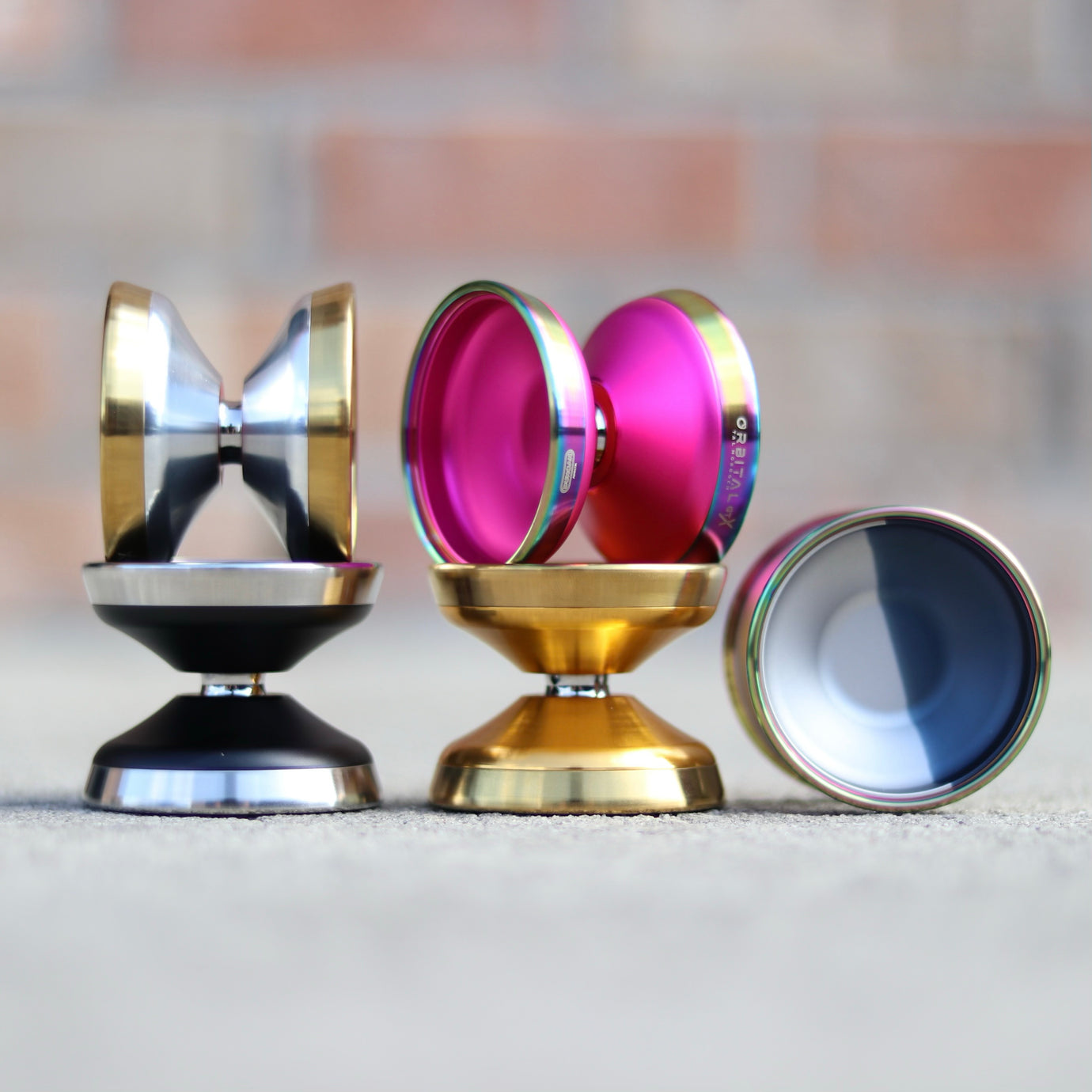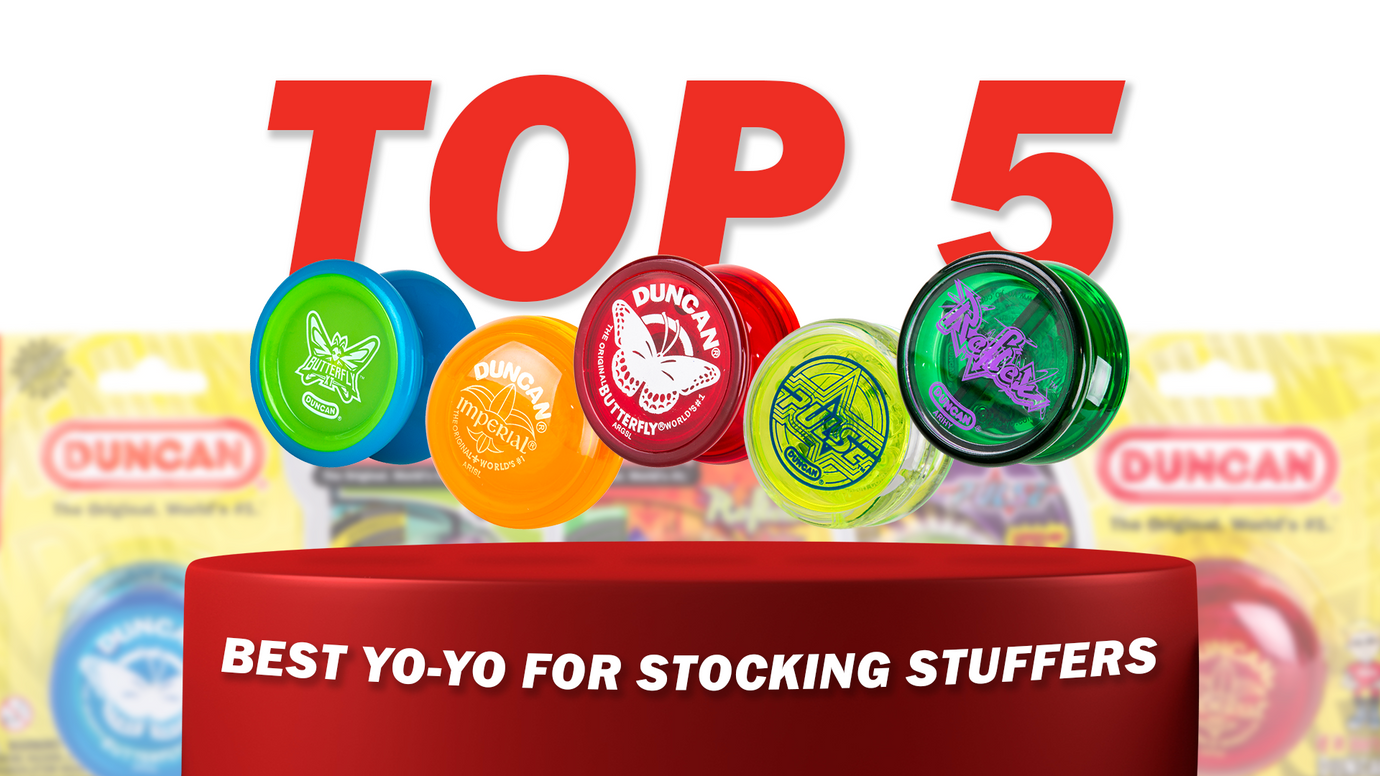World Yo-Yo Champion Story Part Two
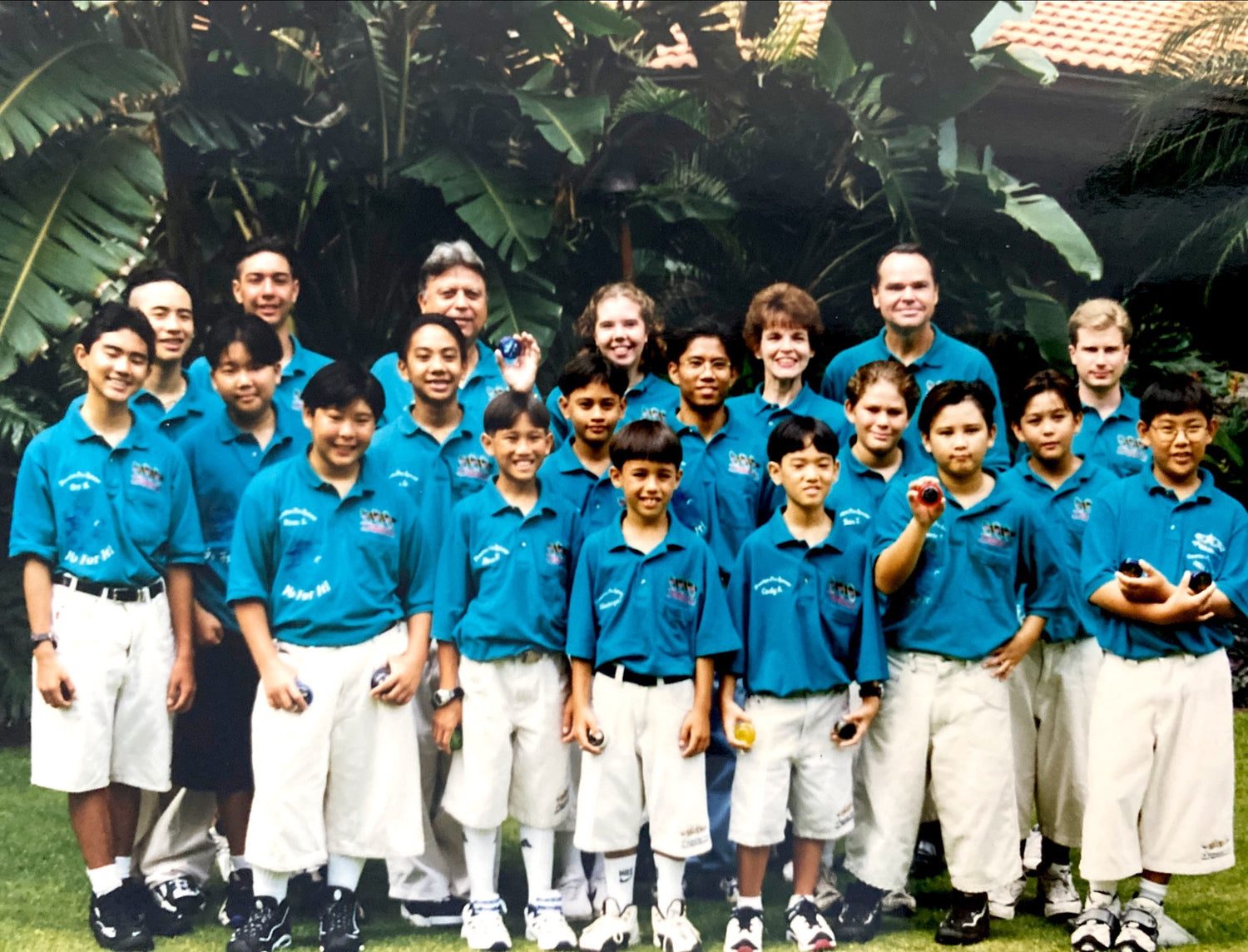
Part 2 - My World Tour
When I look back over my career as a yo-yo demonstrator and all the experiences that I had, it feels like I have lived multiple lifetimes. If I had to pick a favorite time during my career, it would be during my time as a member of Team High Performance, which began in the fall of 1996.
One evening as my family and I were about to sit down to dinner; we received a phone call from a man in Hawaii. He briefly introduced himself, said he had heard about me from Dale Myberg, one of my mentors and a Grand Master. The next thing he said was, "how would you like to go to Japan"? My eyes grew huge, and my parents stopped what they were doing.
The next thing I know, only a month later, I am flying by myself to Japan. I had never met this businessman (Alan Nagao) nor flown anywhere by myself. I was to meet him and two other demonstrators Paul Buethe and Noel Popham. At the time, this was just another yo-yo performance in a cool place. I did not realize that this was the start of the biggest world yo-yo craze in history. A boom in which I would become one of the main stars and at the forefront of promotional events and advertisements.

Many have heard of Team High Performance, been a member of it, or have tried to join over the years. Alan Nagao of HPK Marketing had developed a marketing plan to market yo-yos to kids by using kids as demonstrators. Historically speaking, this was a new venture. Before THP, demonstrators and marketing promotions for yo-yo companies were always adults except for a few talented kids used on occasion.
His idea was to create a team of yo-yo players comprised mainly of kids ranging in age from 6 – 16 years old. However, to train these kids and build the team, he needed to hire professional demonstrators and mentors.
My first trip to Japan was one of several test promotions that they implemented in which we had little initial interest from Japanese spectators. Performing on the streets and in crowded public spaces, we put on daily yo-yo shows and pulled volunteers from the audience for contests. Most of the time, we had to drag them on stage as they were reluctant.
Soon after my first trip to Japan, HPK flew me to Hawaii to teach the kids hat they had in their local toy store yo-yo club. The goal was to help them learn several levels of predetermined trick play needed to put on a yo-yo show. But it was also to teach them how to be on stage and perform. I remember being excited about finally being with a group of kids around my age. The first team member I met, a key player, and soon to be the team captain and star of the team was Alex Garcia. Other teachers and pros brought out included Dennis McBride, Paul Buethe, Dale Myberg.
My position on the team was unusual because I was not an adult professional, nor was I just one of the kids.While most kids had to earn their spot to be on the team, I was a contracted professional demonstrator and team member. Of course, I, as well as any other Pro, had to complete all the tricks and skill levels required.

Following this, we were all rounded up and shipped off to the first-ever yo-yo training camp. Like a sports training camp, this was in what seemed like the middle of nowhere on the Island. We were divided into cabins and small mini teams of 3-4 and expected to follow a strict training schedule.

So, what does one do or learn at a yo-yo team camp? Not what you would expect. While we did have time to practice and learn yo-yo tricks, the camp focused on team building activities, learning how to present and choreograph a yo-yo freestyle performance. We also learned daily touring skills like washing clothes in a sink, ironing our uniforms, and being on time. Yes, as a team of kids who were about to travel with only 1-2 adults on a concert like tours, these skills were crucial to our day to day operations.
Over time as our team grew and we became known as the "teal tide." A nickname that was bestowed upon us by competitors because whenever we showed up to an event, we came as one unit decked out in our teal THP shirts. But also because we usually dominated the competitions.

What made us such a strong team was our skill set and how we functioned as an actual team. While we all had individual personalities and styles, we worked as one unit. We also started team freestyles in which we performed creative, perfectly synchronized tricks to music. A team bond, mentality, and unique skill set that formed at these camps.
Officially becoming Team High Performance, we began a world tour starting with Japan. Bandai, one of the largest toy distributors in the world, formed a partnership with us, setting up performances at retail and large event venues, creating commercials, and various other advertisements. We even had trading cards, yo-yo music, and hyper yo-yo apparel and accessories.

Yo-Yo play and the members of THP quickly rose to fame in Japan. We started receiving crowds of several hundred to a few thousand with a growing circle of "groupies." At some point in 1997, we were performing at one of our biggest venues to date. We stepped onto the stage to be welcomed by this massive crowd of kids cheering for us. However, it was not until after our performance that we realized how popular the yo-yo and our team had become. We had left the stage event area only to turn around and see a massive crowd of kids sprinting towards us. We ran up the escalators and stepped into the first elevator to hear kids banging on the elevator doors once they closed. This was the beginning of the boom!

Our performance venues and stages grew to mega concert like stages, large projector screens, and sound systems. We had professional MC's, security, and crowd control staff. At each event, we were welcomed by our regular followers and by new fans who often showered us with backstage gifts.

After most performances, we would often greet our fans and sign autographs. Unfortunately, because fans pushed and became uncontrollable with excitement to meet us, our signing sessions were often cut short. Sometimes they would spot us in a backroom before our performance, run to tell their buddies, and then quickly be faceplanted against the windows.

During all of this, I began practicing for the National and World yo-yo contests. As a member of THP, I had been sponsored to compete at these events with all expenses paid. That year, 1997, was my first time at the National Yo-Yo contest in Chico, California. I had been practicing for hours every day, along with demonstrating and traveling on these tours. Like most, I was so nervous I barely slept and could not stomach food in the morning. But I was also incredibly focused and determined to win. Performing one of my best freestyles, I scored high with no deductions for errors and won the title.

What followed was a whirlwind of press interviews across the country, ranging from newspaper and TV news to radio talk shows. I was the first girl to win the National championship and the only girl competing in that division. I remember waking up at 5:00 am to take interviews and coming home from school at lunch or leaving school early to do more.

The following year, I went on to win the World Yo-Yo Contest. Immediately after winning, we went on a world yo-yo tour promoted as "the tour of champions". From Las Vegas to Los Angeles, South Korea, to Japan to France and England, I was on a 4-week victory tour. This time, it was not just local or national press calling for interviews. We had press conferences and news interviews in each of the various cities and countries I visited.

The most creative press conference was in London. They held a special press event at this venue meant to be a "yo-yo champion experience." As the press entered the first floor, our staged staff fitted them with the perfect fitting yo-yo. We helped them pick out a yo-yo and cut their string, but created the experience to be like getting fit for custom sports equipment. Next to the "fitting room," we had a visible "sports locker room," where we were warming up like athletes before the main event.
After this, Journalists walked into the main arena, filled with special yo-yo zones, yo-yo practice cages, and more. Any time a string broke or a yo-yo had an issue, a repair expert/yo-yo ninja-like person would drop from the ceiling mission impossible style, change the yo-yo, and quickly disappear back into the ceiling. We were, of course, the main event and soon went on stage to perform our freestyles. I had a set song I liked to freestyle to, but just as I stepped onto the stage, the DJ mixed up the tracks and wound up playing "Macho Man" by the Village People. I was mortified for about two seconds when the audience went crazy for the song and seemed to feel it fitting for me. I was the first female to win the Worlds, beating all the boys—a fact heavily marketed to the media.

Eventually, the hyper yo-yo craze reached a peak. We were in a full yo-yo boom in Japan with the first Japanese yo-yo event drawing over 45,000 kids. We had become superstars in this country for kids. As the craze grew, our promotions and performances in other countries did as well. I spent the next year traveling 3-4 weeks at a time and returning home for only 1-2 weeks. I kept this schedule for a year until I started college. At that point, the craze started dying, and thus the marketing tours eventually ended.
We sold millions of yo-yos, and the marketing promotions during this time ultimately helped grow yo-yoing into an actual sport. Our team grew from the original dozen based out of Hawaii to a few hundred members spread across multiple countries. After the boom died and promotions ended, most team members like me started high school or college. Although the team eventually came to an end, we made bonds and friendships that will last a lifetime.
The memories and stories I have from these years are enough to fill a book. Eventually, I hope to write and post photos for each of the countries I visited as each tour was unique. My yo-yo collection is not just pictures, video, and yo-yos but also gifts and keepsakes that fans gave me during these tours. Memories and friendships that will always be a nostalgic part of my life.

